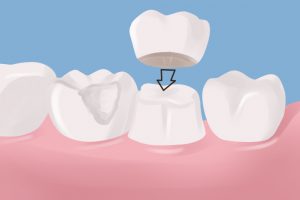 Over time, the size, shape and strength of your teeth may degrade. You might grind your teeth while you sleep, or eat lots of acidic foods that will contribute to decay. A dental crown helps to protect your teeth with a tooth-shaped cap that fits over your teeth. This breakdown from Dr. Sid Solomon should help patients prepare for the procedure.
Over time, the size, shape and strength of your teeth may degrade. You might grind your teeth while you sleep, or eat lots of acidic foods that will contribute to decay. A dental crown helps to protect your teeth with a tooth-shaped cap that fits over your teeth. This breakdown from Dr. Sid Solomon should help patients prepare for the procedure.
The crowns are essentially cemented into place, and they bond to your teeth this way. They typically fully encase the portion of the tooth exposed above the gum line, so it’s a lot like a whole new tooth.
Dental crowns are useful when your dentist identifies a particularly weak tooth in your mouth, or when you have a tooth that is broken and needs to be restored. Over time, decay can wear a tooth down until almost nothing remains, which is another time where a crown might prove useful.
The crown requires a tooth to reduce in size, so your dentist may take some steps to reduce it. Next, expect your dentist to take an impression of your mouth. This will provide the mold for the crown. If your dentist decides to make the crown from porcelain, he will most likely match it to the shade of your teeth.
Crowns can last for a lifetime, but they do sometimes come loose or fall out. If you want to ensure your crown lasts a long time, practice excellent oral hygiene.
